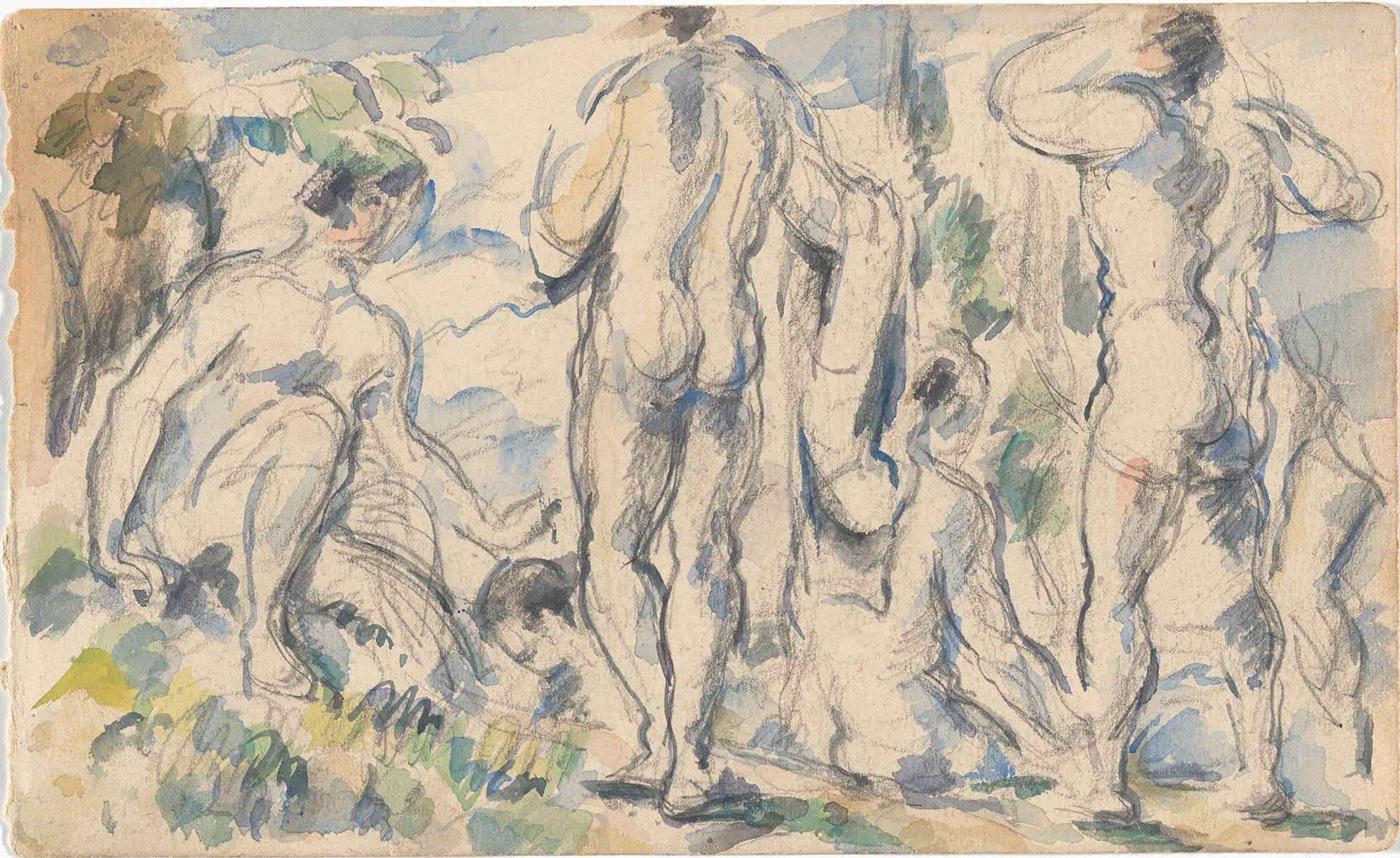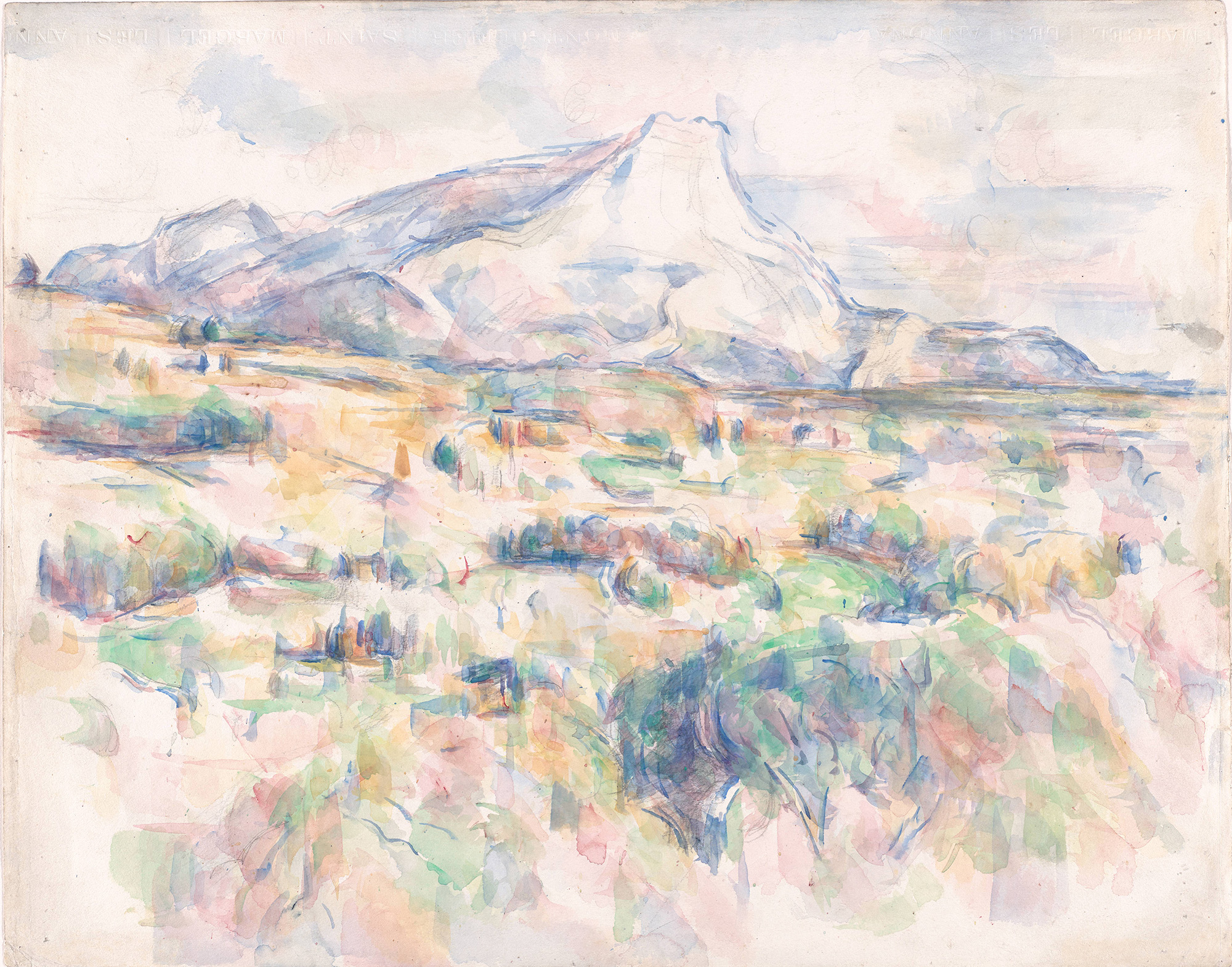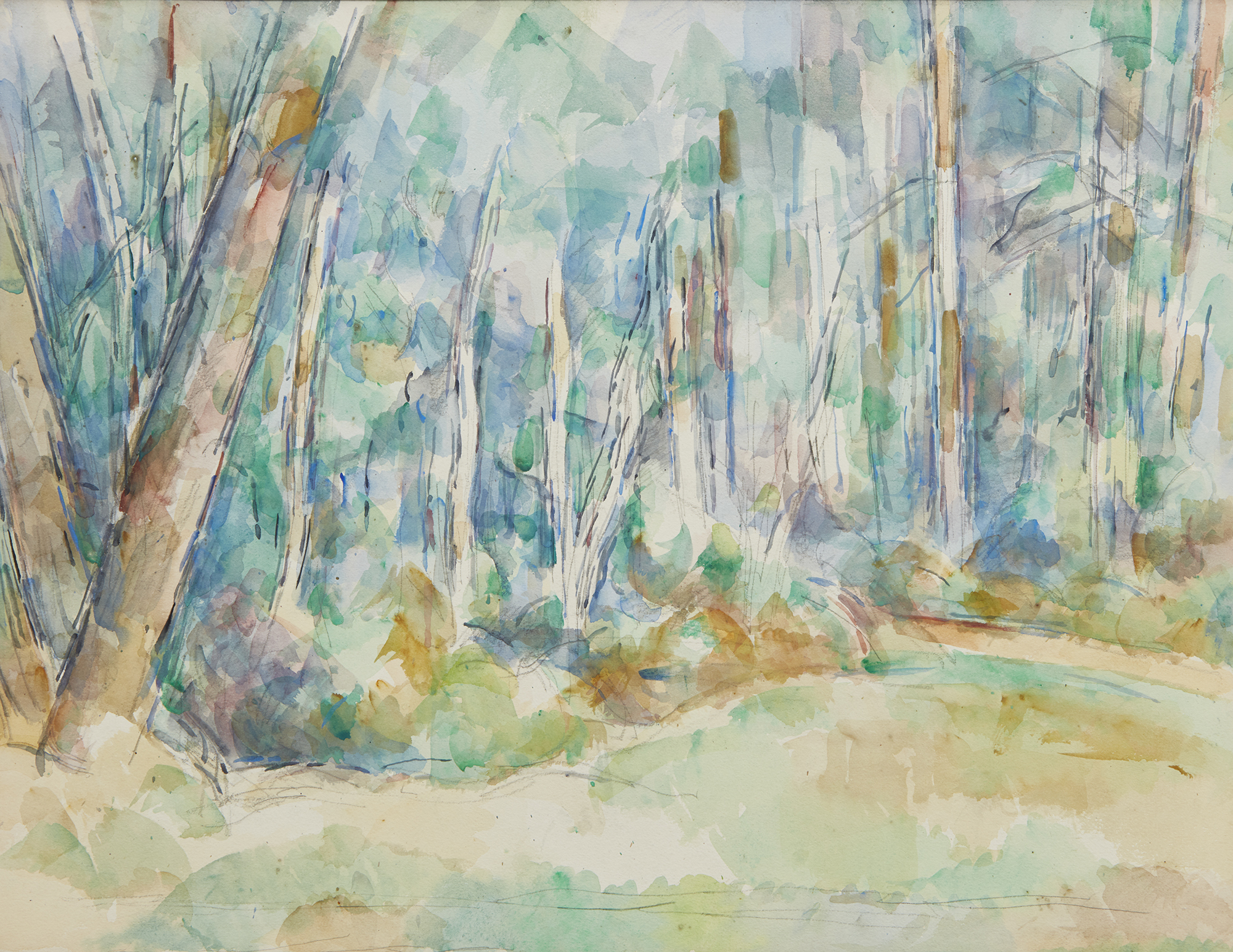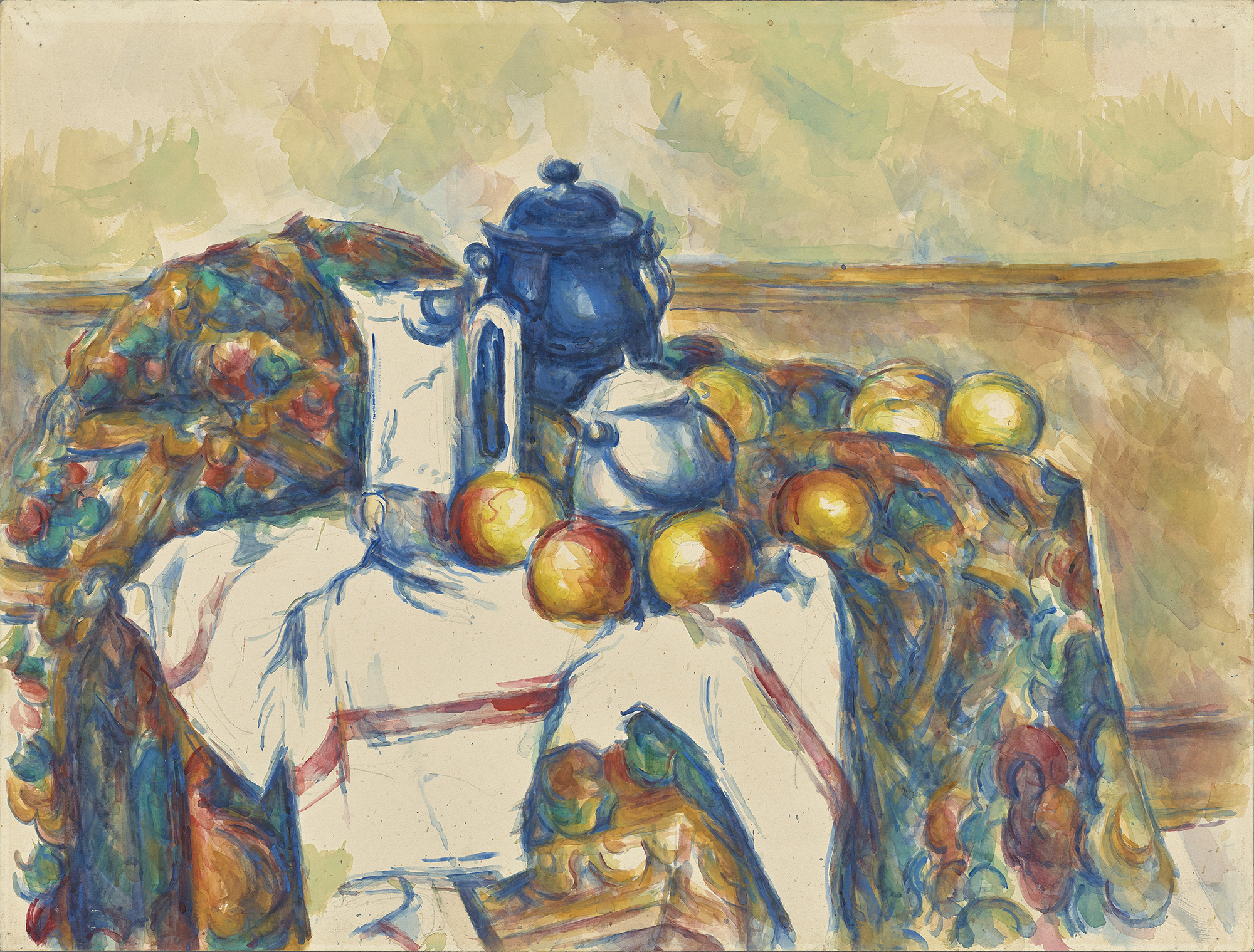American Regionalism
![]()
[image: Thomas Hart Benton (1889–1975), "Oh, it's all right to go to Europe for adventure, sure, but there's no advantage to studying there."] [image: Thomas Hart Benton (1889-1975), Study for 'Lumber Mill', oil on paper board, American regionalism] Thomas Hart Benton, 1959, Louise Bruner papers, 1945-1976, Archives of American Art, Smithsonian Institution. [image: Roger Medearis (1920–2001), "There were interruptions - the war and the abstract expressionist fifties and early sixties, when I attempted to desert art for business."] [image: Roger Medearis (1920–2001), Missouri Farm, ...
read moreArt History News1 week ago
Twilight of American Impressionism: Alice Ruggles Sohier and Frederick A. Bosley![]()
Alice Ruggles Sohier, Musing, 1914. Oil on canvas. Private collection. Frederick A. Bosley, Indian Pond and Mt. Cube, New Hampshire. Oil on canvas. Private collection. At the Discover Portsmouth Welcome Center (Portsmouth Historical Society) in New Hampshire this summer is a special exhibition on two underappreciated American Impressionists. “Twilight of American Impressionism: Alice Ruggles Sohier and Frederick A. Bosley” (through Sept. 12, 2021) showcases the largely unsung talents of Alice Ruggles Sohier and Frederick A. Bosley, two American impressionists working at a time ...
read moreArt History News1 week ago
A new book on Georgia O’Keeffe![]()
A visual feast of flowers, abstractions, cityscapes and landscapes from American modernism’s most iconic painter, a new book on Georgia O’Keeffe (1887–1986) corresponds with the traveling retrospective now on view at Spain's Museo Nacional Thyssen-Bornemisza. Georgia O'Keeffe, Amapolas orientales, 1927. (Oriental Poppies) Óleo sobre lienzo / Oil on canvas. 76,7 x 102,1 cm. Collection of the Frederick R. Weisman Art Museum at the University of Minnesota, Mineápolis. Adquisición del museo / Collection of the Frederick R. Weisman Art Museum at the University of Minnesota, Minneapolis...
read moreArt History News3 weeks ago
Women Behaving Badly: 400 Years of Power and Protest![]()
* Baltimore Museum of Art * *July 18–December 19, 2021* Edvard Munch. Vampire. 1895. The Baltimore Museum of Art: Board of Trustees Fund. BMA 1954.1 © Edvard Munch / Artists Rights Society (ARS), NY / ADAGP, Paris Scipio Moorhead . Phillis Wheatley, Negro servant to Mr. John Wheatley, of Boston. 18th century. Rare Book and Special Collections Division, Library of Congress, Washington, D.C. Eugène Samuel Grasset . Jeanne d'Arc / Sarah Bernhardt (Joan of Arc / Sarah Bernhardt) . 1890. The Baltimore Museum of Art: Gift of Henry E. Treide. BMA 1956.85.18 Edward Steichen. Anna May Wo...
read moreArt History News3 weeks ago
The Arch of Nero, a masterpiece by Thomas Cole![]()
The Philadelphia Museum of Art has announced that it will display in its American galleries *The Arch of Nero*, a masterpiece by the great 19th-century American landscape painter Thomas Cole (1801–1848), as a long-term loan from the Thomas H. and Diane DeMell Jacobsen PhD Foundation. Purchased by the Foundation at Sotheby’s American art auction in New York on May 19, 2021, this painting was one of a number of works of art sold by the Newark Museum of Art in Newark, New Jersey, to raise funds for the direct care of its collection. *The Arch of Nero *was widely considered to be t...
read moreArt History News3 weeks ago
Maritime Masterpieces![]()
*With ‘Maritime Masterpieces’ the Maritime Museum Rotterdam is opening the coda to the Boijmans Next Door series, bringing together more than 70 treasures from the two collections. Celebrated works by Bosch, Monet and other masters, dating from the 16th to the 21st century, join forces to tell this tale of marine life and art. * The post-lockdown reopening of museums on 5 June means that the public can at last visit the brand-new ‘Maritime Masterpieces’ exhibition in the Maritime Museum Rotterdam. From art-historical and marine perspectives, the exhibition tells the tale of sh...
read moreArt History News3 weeks ago
Picasso and the Allure of the South![]()
*The Dalí Museum * *Jan. 29-May 22, 2022* Some of Pablo Picasso's most creative and prolific artistic periods took place during extended sojourns in the mountain towns of northern Spain and along the Mediterranean coast of France. An ambitious exhibition considers the artist’s deep and abiding connection to this cross-cultural region, where he made many of his most important contributions to modern art. *Picasso and the Allure of the South* presents 77 paintings, drawings and collages – approximately half of which have never been seen in the U.S. – from the Musée national Pi...
read moreArt History News3 weeks ago
Ralston Crawford: Air & Space & War![]()
*Brandywine River Museum of Art * *June 20, 2021 - September 19, 2021* Ralston Crawford (1906-1978), Factory with Yellow Center Shape, 1947, oil on canvas, 28 x 40 in. Vilcek Collection, VF2013.01.01 The Brandywine River Museum of Art will reopen to the public on Sunday, June 20, 2021, with a new special exhibition, *Ralston Crawford: Air & Space & War*. During its temporary closure, the Museum underwent several facility renovations. Additionally, the Museum’s other galleries have been refreshed with paint and rehung with a new selection of recent acquisitions and loans, as well a...
read moreArt History News3 weeks ago
Another World: The Transcendental Painting Group![]()
*Albuquerque Museum opens June 26, 2021* *Philbrook Museum of Art, from October 17, 2021 to February 20, 2022 * *Artis—Naples, The Baker Museum, from March 26 to July 24, 2022* *Crocker Art Museum from August 28 to November 20, 2022* *Los Angeles County Museum of Art, from December 18, 2022 to April 16, 2023* Agnes Pelton (American, born Germany, 1881–1961), Winter, 1933. Oil on canvas, 30 x 28 in. Crocker Art Museum. The major traveling exhibition *Another World: The Transcendental Painting Group *kicks off this summer. This landmark museum exhibition—the first exhibition of t...
read moreArt History News3 weeks ago
The Medici: Portraits and Politics, 1512–1570![]()
xx [image: Bronzino Portrait of a Young Man] *Exhibition Dates:* June 26–October 11, 2021 *Exhibition Location: * The Met Fifth Avenue, Gallery 999, Iris and B. Gerald Cantor Exhibition Hall *Opening June 26, The Medici: Portraits and Politics, 1512–1570 will feature more than 90 works of art by some of the most celebrated artists of the Italian Renaissance, including Bronzino, Pontormo, Cellini, and many others*Some of the greatest portraits of Western art were painted in Florence during the tumultuous years from 1512 to 1570, when the city was transformed from a republic w...
read moreArt History News4 weeks ago
Book: Boston’s Apollo: Thomas McKeller and John Singer Sargent i![]()
Thomas McKeller (detail) (1917–21), John Singer Sargent. Museum of Fine Arts, Boston The Isabella Stewart Gardner Museum's 2020 exhibition catalogue *Boston’s Apollo: Thomas McKeller and John Singer Sargent* has been recognized by the Art Libraries Society of North America (ARLIS/NA) for excellence in art publishing. Established in 1980, the Wittenborn Award honors the memory of George Wittenborn, a premier New York art book dealer and publisher who was a prominent supporter of the Society in its formative years. *Boston’s Apollo: Thomas McKeller and John Singer Sargent* inaugur...
read moreArt History News4 weeks ago
Summer Light: American Impressionist Paintings from the Thomas Clark Collection![]()
Alice Judson (American, 1869-1948), Summer Day, Gloucester Harbor, c. 1920s, oil on canvas, 20 x 24 inches. Collection of Thomas Clark George Loftus Noyes (American, 1865-1954), Sunlit Road, c. 1910, oil on canvas, 27 x 22 inches. Collection of Thomas Clark As the days grow longer and the weather warmer, the Palmer Museum of Art at Penn State will open Summer Light: American Impressionist Paintings from the Thomas Clark Collection. On view through August 29, this special exhibition features twenty-four paintings from the major forthcoming gift of collector Thomas Clark, whose pri...
read moreArt History News4 weeks ago
Cross Pollination: Heade, Cole, Church, and Our Contemporary Moment![]()
From June 12-October 31, 2021, a special new exhibition is presented jointly at the Thomas Cole National Historic Site in Catskill and Frederic Church’s Olana (State Historic Site) in Hudson in New York’s Hudson River Skywalk Region. Thomas Cole, "View of Mt. Etna," 1842. Crystal Bridges Museum of American Art, Bentonville, Arkansas.Patrick Jacobs (b. 1971) Pink Forest with Stump, 2016. Styrene, acrylic, cast neoprene, paper, hair, polyurethane foam, ash, talc, starch, acrylite, vinyl film, copper, wood, steel, lighting, and BK7 glass diorama window: 7 3/8 in. Crystal Bridges Mus...
read moreArt History News4 weeks ago
Monet at Étretat![]()
The Cliffs at Étretat, 1885, Claude Monet, French, 1840-1926, oil on canvas, 25 5/8 × 32 in., Sterling and Francine Clark Art Institute, 1995.528. The Seattle Art Museum will present *Monet at Étretat* (July 1–October 17, 2021), exploring the artist’s engagement with Étretat, a seaside village in Normandy, France. The exhibition takes *Fishing Boats at Étretat (*1885), the only work by Claude Monet in SAM’s collection, as inspiration, presenting it alongside nine other paintings by Monet from his visits to the village as well as five paintings by his contemporaries. *M...
read moreArt History News5 weeks ago
Cézanne Drawing—The Museum of Modern Art presents a major exhibition offering a new look at the celebrated modern artist Paul Cézanne (1839–1906) through close attention to his process in pencil and watercolor and fresh insights into this profoundly original yet lesser-known body of work. Cézanne Drawing, on view at MoMA from June 6 through September 25, 2021, is the first major effort in the United States to unite drawings from across the artist’s entire career, tracing the development of his practice on paper and exploring his working methods. More than 250 works on paper— including drawings, ...
read moreArt History News1 month ago
Alphonse Mucha: Art Nouveau Visionary![]()
* The North Carolina Museum of Art * *October 23, 2021 through January 23, 2022* Alphonse Mucha, Daydream (Rêverie), 1897, color lithograph, 28 5/8 × 21 3/4 in., Mucha Trust Collection, © 2021 Mucha TrustMucha, Precious Stones AmethystMucha, Salon Des Cent Mucha with posters for Sarah Bernhardt. The North Carolina Museum of Art (NCMA) announced its fall 2021 exhibitions, including *Alphonse Mucha: Art Nouveau Visionary*, opening October 23, 2021, and on view through January 23, 2022. Czech-born Alphonse Mucha (1860–1939) was one of the most influential and celebrated artists in ...
read moreArt History News1 month ago
American Art Week from May 15-22![]()
From Debra Force, Maurice Brazil Prendergast (1858-1924) Bathers, circa 1912, oil on canvas, 22 ¼ x 34 ¼ in.From Avery Galleries, John Whorf (1903 – 1959) Venice , 1925. Watercolor, 14 ½ x 21 inches. Signed and dated lower right: John Whorf 25. From Jonathan Boos, Elizabeth Sparhawk-Jones, In Apron Strings, 1911. Oil on canvas. 30 x 32 inches. Signed lower right. From Meredith Ward Fine Art, Frederick Kann (1884-1965) Untitled, c. 1938. Oil and cork on canvas board, 18 x 24 inches. The American Art Fair celebrates spring 2021 American Art Week from May 15-22 with Open Houses by ...
read moreArt History News1 month ago
Cranach to Canaletto: Masterpieces from the Bemberg Foundation![]()
* San Diego Museum * *June 18, 2021, through Sept. 27, 2021* Lucas Cranach the Elder, Hercules at the Court of Omphale , 1531. Oil on panel. Collection from the Fondation Bemberg. © Fondation Bemberg and RMN The San Diego Museum of Art plans to open to two summer exhibitions, *Cranach to Canaletto: Masterpieces from the Bemberg Foundation *and *Everything You See Could Be A Lie: Photorealistic Drawings by Ana de Alvear. *From Old Master paintings to contemporary, hyper-realistic drawings, works from these exhibitions are rarely seen in the U.S. and will be on view at the San Dieg...
read moreArt History News1 month ago
Cape and Island Vistas—Cape Ann and Monhegan Island: Contrasted New England Art Colonies![]()
*Monhegan Museum of Art & History, Monhegan Island, Maine* *July 1 through September 30, 2021* *Cape Ann Museum* *October 23, 2021–January 16, 2022* Movalli, Charles 1945-2016 Marine Railways 2014 36 x 48 in. Collection of the Cape Ann Museum, Gloucester, MA, Gift of Dale Ratcliff Movalli, 2016 William Lester Stevens (1888-1969) Harbor Scene, Gloucester. Rockport Art Association & Museum Permanent Collection.Theresa Bernstein (1890-2002) Studio Garden. Rockport Art Association & Museum Permanent Collection.James E. Fitzgerald (1899-1971) At the Graveyard. Monhegan Museum of Ar...
read moreArt History News1 month ago
Extra Ordinary: Magic, Mystery and Imagination in American Realism![]()
*The Georgia Museum of Art at the University of Georgia * Through Sunday, Jun 13, 2021 [image: Feature Image] Saturday, Feb 27, 2021 — ------------------------------ “Extra Ordinary” surveys a range of American artists who embraced realism, representation and classical artistic techniques in the face of the rising tide of abstraction at mid-century. Through sharp focus, suggestive ambiguity and an uncanny assemblage of ordinary things, their works not only show that the extraordinary is possible, but also conjure the strangeness and wonder of everyday life. Long overshadowed by...
read moreArt History News1 month ago
Christie’s American Art Live Auction Live Auction: May 18Norman Rockwell (1894–1978) *Jeff Raleigh's Piano Solo ("'Oh Lord,' Jeff said prayerfully, 'I wish Alice was here. Oh, I wish she could hear this…'") (The Virtuoso)*oil on canvas 28 ¾ x 22 ¾ in. (73 x 57.8 cm.) Painted in 1939. $1,200,000-1,800,000 Christie’s announces its American Art sale on May 18 will present a selection of highlights ranging across the genre from the Hudson River School and art of the American West, to American Illustration and Modernism. The sale will directly follow the 10am live auction Fields of Vision: The Private Collection of Artists Wolf Kahn and Emi...
read moreArt History News1 month ago
In American Waters![]()
*Peabody Essex Museum* *May 29 through October 3, 2021* *Crystal Bridges Museum of American Art* *November 6, 2021 through January 31, 2022* William Formby Halsall (1841-1919) Vigilant in last days Race against Valkyrie, 1893. Oil on canvas, 19 × 29 1/4 in. Gift of Frederic A. Turner, 1961. © 2020 Peabody Essex Museum. Photography by Kathy Tarantola This May, the Peabody Essex Museum (PEM) debuts *In American Waters**,* a painting exhibition that reframes and expands our understanding of American culture and environment by looking at the sea. For over 200 years, American artist...
read moreArt History News2 months ago
Art History News - April![]()
Pablo Picasso's Femme assise près d’u





































































































